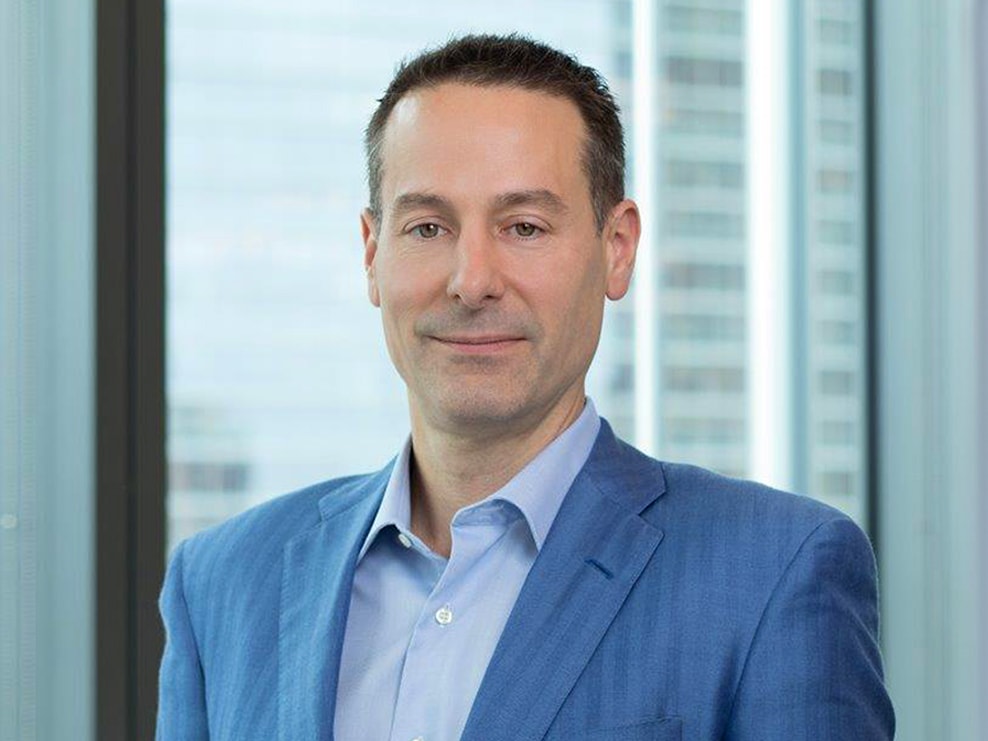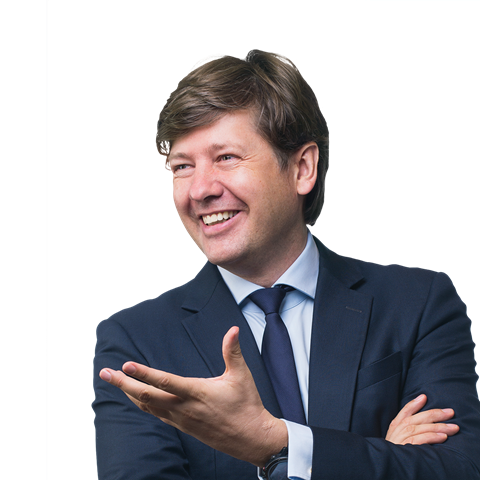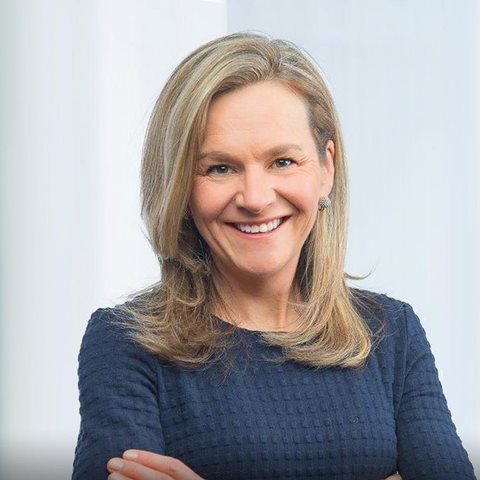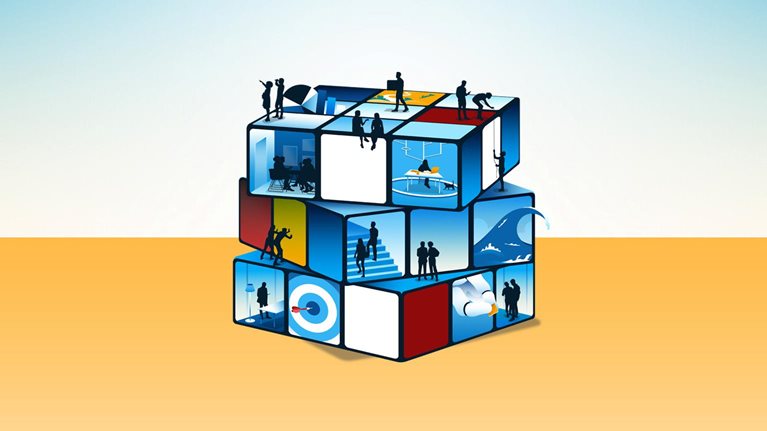We are living through an era of unprecedented challenges and opportunities. The climate crisis, global health challenges, and changes in social values are upending individual priorities. Globalization and geopolitics are shifting the world’s tectonic plates. How we live and work is being constantly reinvented by advances in technology and the emergence of generations who were “born digital.”
How should leaders navigate this moment? What does leadership look like in an era where turbulence and disruption are the norm?
The answer to those questions can’t be divorced from the answer to another one: What does an organization that thrives during such unstable times look like? For decades, organizations were designed and managed for an industrial environment. They were geared toward preserving stability, scale, and predictability with a focus on maximizing earnings for shareholders, and they paid little attention to the broader—often unintended—impact of their actions. Not anymore. Many organizations have recently decided that this approach is ill-suited to today’s complex challenges, and especially ill-suited to the host of societal demands companies must now consider.
In its place, a new form of organization and management has been slowly emerging. We believe this new approach is at a tipping point where more and more companies will join the pioneers who are already riding this wave.1 Organizations such as Allianz, Haier, Microsoft, and Nucor are transforming their industries with a new organizational approach that seeks to be open, fluid, and adaptable; unleashes the collective energy, passion, and capabilities of its people; reimagines strategy; and focuses on delivering greater value to all stakeholders. This new model focuses on a powerful aspiration: creating sustainable, inclusive growth. The companies leading the way are developing new architectures featuring collaborative networks of self-managing teams that operate in rapid cycles and focus on creating value for their stakeholders. Their cultures support a more open, collaborative, and emergent way of working. And the shift to this new kind of model changes the way businesspeople must lead.
We are moving from an era of individual leaders to an era of networked leadership teams that steer the organization. The old hierarchical model of leadership is increasingly seen as an obstacle to meeting the complex demands facing today’s organizations. Companies seeking to thrive now still need leaders who are accountable for their individual roles—but leadership itself resides in the teams of leaders acting in service to the organization. High-performing leadership teams will always outperform the capabilities of their individuals. This new model has a clear purpose and focus: to benefit all stakeholders by enabling people to work and learn together to build and operate a continually evolving system for creating value.
This new approach calls on leaders to make fundamental evolutionary shifts, well beyond the standard expectation that they continually develop additional skills. They must, in fact, reimagine themselves, undertaking inner work to shift their mindsets and consciousness to see the world anew; to rethink their interactions, roles, and ways of working as part of leadership teams; and to reimagine their organizations and the industries in which they operate.
Reimagining leadership: Five critical shifts
For decades, the attributes regarded as central to being a successful company have mirrored the qualities prized in leaders: focusing on earnings, demanding results, exercising authority and control, and being fiercely competitive. For organizations to thrive now, all of these leadership characteristics must evolve.
For leaders, this means making five fundamental shifts in mindsets and ways of working (table). These shifts don’t mean abandoning your traditional skills. Instead, these shifts build on those skills to substantially expand your capacity as a leader. In other words, you are moving “beyond” the current norm “to” an evolved ambition that’s needed to lead thriving organizations in this new disruptive era. We define the five shifts as beyond profit to impact; beyond expectations to wholeness; beyond command to collaboration; beyond control to evolution; and beyond competition to cocreation. Taken together, the five shifts redefine leadership for a new era.
| Go beyond... | Extend to... | |||
|---|---|---|---|---|
| What we focus on | As manager, deliver profits to shareholders, with a mindset of preservation | Profit | Impact | As visionary, generate holistic impact for all stakeholders, with a mindset of possibility |
| How we create value | As planner, compete for existing value through advantage, with a mindset of scarcity | Competition | Cocreation | As architect, cocreate new value through reimagining, with a mindset of abundance |
| How we organize | As director, command through structured hierarchies, with a mindset of authority | Command | Collaboration | As catalyst, collaborate in empowered networks, with a mindset of partnership |
| How we get work done | As controller, administer through detailed prediction, with a mindset of certainty | Control | Evolution | As coach, evolve through rapid learning, with a mindset of discovery |
| How we show up | As professional, meet expectations, with a mindset of conformity | Expectations | Wholeness | As human, be our whole best selves, with a mindset of authenticity |
What we focus on: Beyond profit to impact
Where is the organization going, and what is it seeking to accomplish? For decades, companies professed a single-minded focus on maximizing profits for shareholders. While this remains necessary—organizations will fail to raise capital if they cannot generate attractive returns for investors—it is no longer sufficient. Today’s organizations must go beyond profits and seek to maximize value and impact for all stakeholders, including contributing to society and a healthy planet.
To ensure that their companies successfully make this shift, leaders must evolve beyond being managers seeking incremental improvement to become visionaries with the courage to craft a resonant purpose and boldly imagine and pursue the future, key ingredients in moving from average performance to top-quintile success.2 From a leadership perspective, this requires the following components:
- aligning people on a clear and shared purpose and aspiration
- defining the value to be created for all stakeholders, as measured by key operating and financial metrics
- contributing positively to wider society and the natural environment
Bold intention shaped the rise of Netflix. Fifteen years ago, its business centered on shipping DVDs to customers’ homes. Yet five years earlier, cofounder and then-CEO Reed Hastings had clearly articulated a very different future: “The dream 20 years from now … is to have a global entertainment distribution company that provides a unique channel for film producers and studios.”3
Netflix’s leaders embedded that commitment to vision, purpose, and stakeholder impact deep into the company’s culture. So as the company began streaming content directly to consumers, stopped distributing DVDs, and launched its own production arm, employees knew they were delivering on a bold ambition. As a result, Netflix created enormous value for all stakeholders, including its customers, investors, creatives, producers, actors, and writers. By 2019, 44 percent of its total business was production, and in six years the company had tripled revenue, increased earnings 32-fold, and upped its share price at a CAGR of 57 percent, compared with 11 percent for the S&P 500.
Are you thinking boldly enough? Not every company will be the next Netflix; but any company can be bold. The CEO of one industrial company felt that his organization was strategically stuck, despite months of deliberations. At a two-day strategy off-site, he asked senior leaders to look back at the history of the company. They realized that the company’s success stemmed from a couple of industry-defining bold moves by its founders. But ever since the company had gone public, leaders had trapped themselves in the cycle of meeting shareholder expectations for quarterly results. Looking back gave them the courage to seek their own industry-shaping legacy: creating a learning ecosystem to revitalize metal-working trades.
How we show up: Beyond expectations to wholeness
What version of yourself do you bring to work? Many leaders conform to a mentality of “at work, I am my role and my performance.” Moving toward deeper personal authenticity is challenging, but it is a necessary evolution for today’s leaders, one that will only become more important in the years ahead as automation elevates the value of work that is inherently human.
Today’s leaders must move beyond their identity as professionals and show up as humans, with the courage to be, and to be seen as, their whole, best, authentic selves. It is challenging. It means recognizing and acknowledging the deeper inner essence of others and being unafraid to reveal one’s own essence, even the quirky bits. The intent is to move beyond task-driven and transactional relationships by taking the time to get to know one another and connect at a human level, sharing values, beliefs, hopes, and fears and enabling all to reveal the greatness that lies within. The following leadership practices can enable this shift:
- expanding awareness and consciousness—the inner state, external context, and whole-system perspective
- developing greater emotional regulation, choice of response, and adaptation to new situations
- practicing well-being as a skill—physical, emotional, mental, and spiritual
What makes this shift hard is that we are wired for survival, and our fear-based reactions send us into old habits to restore a false sense of certainty. In other words, when adaptability is most crucial, we are least able to tap into it. But if we can evolve, we can move beyond a state where fear limits beliefs and mindsets to one where people can tap into their deepest passion, wisdom, creativity, relationships, and expertise. Unleashing the full human potential in an organization is why forward-looking companies work so hard to create environments of belonging and psychological safety and to develop compassionate relationships in teams.
At a Singaporean multinational providing users with delivery, mobility, and financial services, leaders found themselves in a position familiar to senior executives at any hypergrowth company. As the young organization prepared for an IPO, leaders felt out of their depth, fatigued, and constrained by a lack of experienced leaders. The solution? The company invested in nearly 100 leaders and their teams over 18 months, helping them shift toward wholeness and authenticity. The effort helped leaders cultivate self-awareness, show up as themselves, empower others, build a feedback culture, and foster psychological safety. Armed with greater authenticity, personal resilience, and adaptability, the young leaders coped well with the pressure of leading their teams to a successful IPO during a global pandemic.
Are you allowing hopes and fears to have a voice? Hopes and fears are part of being human and part of business as usual. Are you acknowledging and addressing that with your teams? The CEO of one engineering company encouraged more candid and vulnerable engagement by sharing his feelings of frustration and powerlessness. Reflecting on his legacy as a third-generation CEO of a family business, he admitted that his desire to please investors had obstructed the higher purpose of the organization. His vulnerability helped his senior leadership team become more open and candid, enabling a new level of authentic dialogue.
How we organize: Beyond command to collaboration
Throughout the 20th century, organizations adopted increasingly complex matrix structures underpinned by silos and opaque hierarchies. That approach has ossified. New ways of organizing work are evolving that unlock organizational bottlenecks and enable people to work together much more effectively. Moving beyond siloed hierarchies to a network of autonomous teams working together with transparency, trust, and collaboration offers companies a more adaptable and powerful organizing construct.
This shift requires leaders to evolve beyond being directors that receive and give instructions up and down a vertical hierarchy to being catalysts that empower and guide self-managing teams, fostering connection, dialogue, and cooperation across traditional organizational boundaries. This evolved approach cultivates trust, respect, and compassion; requires letting go of the power that comes with positional authority to embrace a stance of openness; and enables human connection within teams and across formal hierarchies. The following leadership practices can help drive the shift:
- encouraging and empowering people in small self-regulating entrepreneurial teams
- fostering horizontal transparency and collaboration throughout the network and beyond
- moving from a hierarchy of individual leaders to networks of leadership teams
Financial-services company Aon provides a good example of leaders acting as catalysts with a partnership mindset to shape a collaborative network organization. Built through acquisition, Aon had become essentially a federated gathering of fiefdoms, where each leader felt deep ownership of their client relationships and sought to grow their own businesses, leading to duplication and lack of coordination across the company as a whole. Senior leaders wanted to maintain the spirit of entrepreneurship, but they also recognized the need to let go of siloed thinking and inculcate a culture of collaboration. They launched “Aon United,” to put clients at the center of all they did, to support one another as a global organization on their clients’ behalf, and to innovate at scale to meet clients’ needs.
The undertaking was not easy. It took years to fully adapt to the new collaborative model, with Aon investing in development and training for more than 10,000 colleagues. The goal was to shift old mindsets and behaviors and form trust-based networks across regions and product lines. Another goal was to move beyond the region-versus-product trade-off toward a mindset of partnership and collaboration by forming multidisciplinary teams focused on customers, integrating regional and product expertise. Leaders are now expected to spend one day a week helping colleagues outside their area.
The impact has been considerable, enabling Aon to integrate a federation of 60 sub-brands into a single global organization of 50,000 employees in 120 countries, and to increase its market capitalization from $6 billion in 2005 to $50 billion in 2020. The company today views its collaborative ethic as a key competitive advantage: there is a single enterprise-wide income statement; the model for client service has been standardized; and the language of “we … us … ours” is encouraged over “I … me … my.”
Do you have teams of leaders or networks of leadership teams? Where are you on a spectrum ranging from a group of leaders to a true leadership team? Faced with a need to transform her business and organization, one business-unit leader realized that her leadership team was a key barrier to moving forward. Each leader had focused largely on protecting and defending the function they led, making it challenging to align on and launch a unit-wide transformation. So she initiated a journey for the team that focused on building trust, surfacing the limiting beliefs and unconscious commitments that kept them locked in this pattern, and exploring new mindsets and practices. As the journey progressed, everyone committed to making being a member of the unit leadership team their first priority; the nature of the leadership team shifted profoundly, from directing and managing to architecting, catalyzing, and coaching; and roles, targets, incentives, and responsibilities were adjusted to reinforce, rather than undermine, working as a true team. This transition from a team of leaders to a true leadership team transformed the entire organization.
How we get work done: Beyond control to evolution
Leading companies today seek to become learning organizations that are continually evolving, exploring, ideating, experimenting, scaling up, executing, scaling down, and exiting across many different activities in parallel. By accelerating change and allowing for positive surprises and innovations to flourish, they consistently outperform those companies that focus instead on always trying to deliver the “perfect” plan.
We are in the midst of a profound shift in how work gets done, one that asks leaders to go beyond being controllers with a mindset of certainty to becoming coaches who operate with a mindset of discovery and foster continual rapid exploration, execution, and learning. Leaders and leadership teams can learn how to set and work toward outcomes rather than traditional key performance indicators; to foster rapid experimentation and learn from both successes and setbacks; and to manage risk differently, through testing, learning, and fast adaptation. The leadership practices enabling this shift include the following:
- operating in short cycles of decision, action, and learning
- regularly reprioritizing the portfolio of initiatives to simultaneously execute today’s business, cocreate tomorrow’s business, and let go of yesterday’s business
- engaging and leading people, helping them understand—and be excited by—the fact that there will be ongoing significant change
Financial-software company Intuit made such a shift when it found itself plateauing after its initial success with desktop financial-management software for consumers. In response, senior leaders decided to double down on customers, innovation, and design, fostering a culture shift to design thinking and experimentation with fast learning and fast failure at its heart.4
Senior executives, starting with the CEO, published their own performance reviews, admitting mistakes and seeking feedback. Employees were given 10 percent of unstructured time to experiment, and good ideas were given funding. Decision making was streamlined and accelerated, with clear responsibilities and processes based on both data and dialogue. This shift has helped the company evolve into a highly innovative learning organization, with more than 1,800 experiments running at any point in time. In the decade to 2019, the company doubled its customers to 50 million, doubled its revenue, tripled its earnings, and increased its value from $10 billion to $60 billion.
Are you helping people experiment and learn? Sometimes the way to innovate is to connect with the past; sometimes it is to connect with the future. A finance team at a hospitality company, for example, recognized it was overextending on detailed planning and control, based on a need for certainty and perfection largely driven by its perception of what the executive team and board expected of it. The CFO challenged her team to become a source of positive energy and innovation and led by example even though there were doubts about whether the company’s senior leadership would support such a shift. It worked: within weeks the team had renewed energy and began to unlock dozens of ways for the business to save costs, accelerate action, and realize more value.
How we create value: Beyond competition to cocreation
Creating value for stakeholders lies at the heart of every organization. For decades, companies have focused on generating competitive advantage to gain an ever-increasing share of existing market value. While it remains essential to offer customers greater value than other options they might consider, in an era of collapsed product life cycles and rapid commoditization, organizations must move well beyond a focus on competitive advantage. They must create new levels of value for customers and other stakeholders by reimagining their business models and industry ecosystems.
This shift requires that leaders evolve beyond being planners operating with a presumption of scarce opportunities and resources to becoming architects who shape new business models and systems by understanding and utilizing the abundance of available opportunities and resources. For many leadership teams, this represents a sea change in the primary focus and content of their work, from tactical optimization and execution to deep strategic thinking, exploration, and social connection. The leadership practices that make up this shift include the following:
- generating a strong and stable platform of core competencies that drive value
- delivering value by applying these core competencies to a continually evolving business portfolio, both organically and through systematic merger and acquisition activity
- amplifying value through creative partnerships with suppliers and competitors that shape and grow the organization’s industry ecosystems
Almost a decade ago, DBS—the Development Bank of Singapore—set an audacious goal of being recognized as the best bank in the world by 2020. Its approach was not to ask, “What does the bank want to do?” but “‘How do we make dealing with DBS easy, fun, convenient, and joyful?” One part of the answer lay in creating an ecosystem mindset with the bank at its core—a platform, not a product—and shifting toward a leadership mindset of creation and abundance. In 2017, DBS launched a platform with 150 APIs (application programming interfaces allow systems to communicate with one another). Five years later, that number has increased to 1,000 APIs with more than 400 partners. The bank acquired new customers through its partners, broadening into property, auto, travel, and utilities.
DBS transformed the enterprise and delivered remarkable impact. This is what can happen when a company adopts each of the five modern mindset shifts we’ve discussed.
- Visionaries generating impact for all stakeholders, with a mindset of possibility. DBS leaders first reframed their vision for the bank: to be a technology company making banking joyful. Teams were tasked with articulating that vision through shifts in mindset and behavior.
- Humans being our whole best selves, with a mindset of authenticity. The bank’s leaders realized that culture and leadership were holding the bank back. They focused on creating and embedding transformational capabilities across the organization, anchored on a growth mindset. The change allowed people to let go of limiting beliefs, and to instead tap into deep passion and ingenuity to bring a new form of banking to customers.
- Catalysts collaborating in empowered networks, with a mindset of partnership. The push to become a technology platform meant DBS would become a horizontal organization, with end-to-end teams reacting fast to meet customer and employee needs. DBS leaders identified and learned from the journeys of the 100 highest-impact teams and accelerated those lessons across the organization. They fostered psychological safety within each team and extensive collaboration and dialogue across teams.
- Coaches evolving through rapid learning, with a mindset of discovery. The organization used transformational two- to three-month team sprints with “balcony time,” or time to gather and reflect in a huddle or a retrospective grouping. This transformational team approach resonated with the new practice of rapid learning cycles and a coaching ethos.
- Architects cocreating new value through reimagining, with a mindset of abundance. By going beyond the focus on products to create a platform, DBS adopted an ecosystem approach that thrived on solving “jobs to be done” or problems customers were trying to address.
Transforming leadership to transform organizations
Transforming an organization into a thriving entity that is able to deliver sustainable, inclusive growth requires a comprehensive approach to leadership transformation, beginning with the senior network of leadership teams. More specifically, this typically requires the involvement of the top-three levels of the organization: the enterprise leadership team, the leadership teams of the major business and functional units, and the leadership teams of primary units within each of the major units, as well as cross-unit governance groups. In large organizations, this may comprise the 500 to 1,000 most senior leaders in the company.
One key is that this change needs to take place voluntarily. Most of us cannot be instructed to change, so a good transformation process will develop emergently, allowing people to come to recognize they will be better off individually and collectively as a result of transforming themselves. This is how they will begin to embrace and adopt new mindsets, capabilities, and practices individually; to cocreate and implement new leadership role definitions, career paths, incentives, and performance management focused on working as a network of leadership teams; and to reimagine their businesses, organizations, and ecosystems to unlock new levels of performance and impact.
A leadership transformation program designed to engage and transform the senior leadership of a global enterprise may include the following elements:
- Initial discovery and design. Stand up a leadership transformation team to guide the effort, define the goals and desired impact, and create the overall architecture for the transformation program. In this initial phase, assessing the readiness of leaders is also critical. Teams need to know where they stand today versus where they would like to be to realize their full potential.
- Immersive introduction. An introductory experience of perhaps three to four days with mixed cohorts of leaders from across the enterprise will engage leaders, catalyze initial “aha” breakthroughs, and generate momentum and connection.
- Leadership team journeys. Coaching support for each leadership team in the network, beginning with early adopters, at three levels: for individual leaders within the team, for the leadership team as a whole, and for how the leadership team engages people both within the organizational unit it leads and across traditional organizational boundaries.
- Collective journey. A shift of the traditional siloed and politicized management hierarchy into a flat, open, and collaborative enterprise-wide network of leadership teams that over time evolves into a leadership community operating with the new approach across the organization.
- Internal practitioner development. An internal community of leadership transformation coaches can help scale the new leadership approach to midlevel, frontline, and informal leaders across the enterprise.
As leaders become more self-aware and embrace new and more enabling mindsets and practices, they will build adaptive capacity by applying these practices to reimagine how they work within each leadership team and as a network of leadership teams. They will work collectively to evolve their foundation, operating model, and business model to become a thriving organization. Their progress toward building a thriving organization through collective leadership transformation should be measured at three levels, each building on the preceding one: changes in leadership mindsets and behavior; the launch or acceleration of business and organizational transformation initiatives; and holistic impact to all stakeholders.
History is filled with the impossible, or even unimaginable, becoming reality. When those moments happen, mental and emotional barriers break down, enabling others to follow suit. We are already seeing some organizations evolve and transform to meet the demands for sustainable, inclusive growth. More and more companies will now follow their lead.
Leaders who develop the new capabilities and mindsets discussed in this article can offer any organization enormous potential as catalysts and enablers of value creation. The emergent journey of leadership transformation invites senior leaders to embrace and apply new principles and practices personally, within their teams, and throughout their organization. By demonstrating new mindsets and behaviors, they are able to draw on reservoirs of organizational energy, passion, and ingenuity; enhance and accelerate the whole enterprise portfolio of performance and transformation initiatives; and unlock new levels of value for customers, employees, investors, and other stakeholders.





